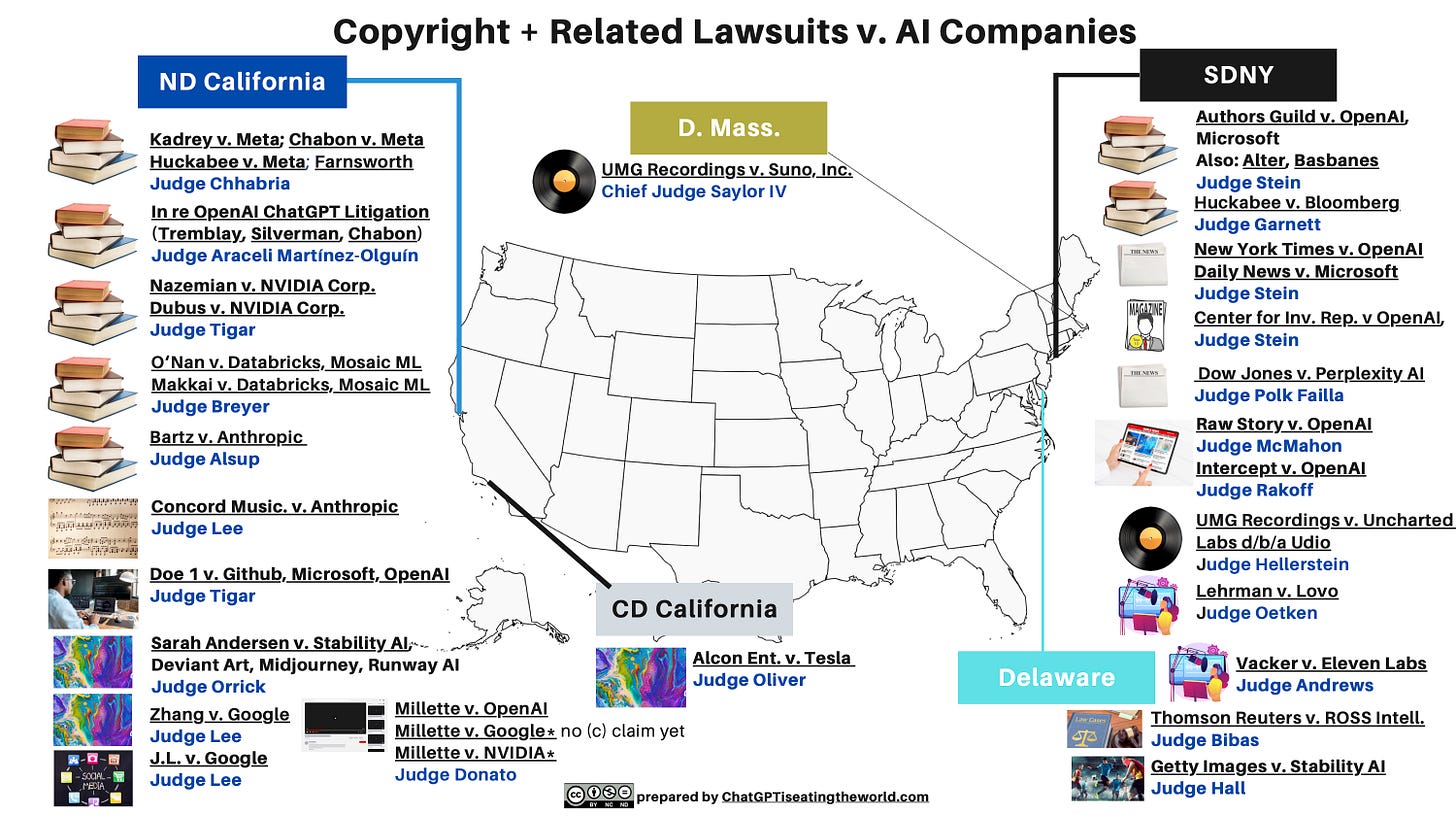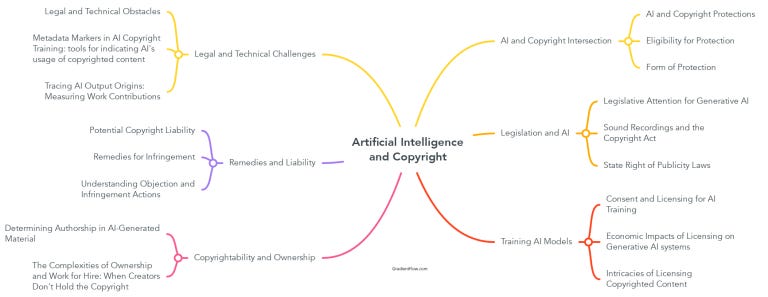The Copyright Fight That Threatens U.S. AI Leadership
Inside Anthropic’s $1.5B deal—and how lawsuits could slow America while China accelerates.
Copyright was designed for the printing press—then stretched by corporate lobbying (Disney famously extended terms to 95 years to keep Mickey Mouse out of the public domain).
Today, damages can reach $150,000 per work, regardless of actual harm. That framework may work for a film or a song, but it breaks down in AI, where models consume billions of words to extract patterns rather than reproduce originals.
Piracy? Clearly illegal.
Training on data to generate something new? Far murkier.
Copyright law simply wasn’t built for machine learning.
The Avalanche of AI Copyright Suits
Anthropic is only the beginning. OpenAI, Microsoft, Meta, Midjourney, and Apple are all under fire. The New York Times alone is seeking billions. More than 40 lawsuits are pending, with damages estimated in the trillions.
History shows why this matters:
Google Books was sued for scanning millions of works. Courts ruled it transformative.
Sega v. Accolade and Sony v. Connectix upheld reverse engineering as fair use, enabling new markets.
Fair use has historically unlocked innovation. Without it, search engines, image databases, and software ecosystems may never have scaled. The danger now: AI could be throttled by years of litigation before clarity emerges.
The China Factor: Litigation as Self-Sabotage
While U.S. firms fight in court, China is accelerating AI development:
The state is building centralized “data exchanges” to ensure researchers and companies have access to massive datasets.
Enforcement of IP rules is lax when it comes to training data. DeepSeek openly cited Anna’s Archive (a pirated library) as part of its training set.
Beijing’s concern isn’t copyright—it’s ideological control.
Bottom line: Chinese labs keep training while U.S. firms hire lawyers. Every lawsuit in San Francisco is effectively a gift to Beijing.
National Security and AI
AI isn’t just about chatbots—it’s a dual-use technology with massive military implications. Autonomous logistics, targeting, and decision-support systems will shape future wars.
Here’s the irony:
The U.S. spends billions restricting China’s access to advanced semiconductors.
At the same time, U.S. courts risk choking American AI firms with copyright claims.
One side faces export controls, the other legal handcuffs. The outcome is the same: a weaker U.S. edge.
Policy Paths Forward
Three levers could resolve the crisis:
Courts should reaffirm that AI training is transformative fair use, while punishing piracy.
Congress could modernize copyright law with compulsory licensing or data trusts.
The Executive Branch could go further: some argue the Defense Production Act should be invoked to compel reasonable licensing in the name of national defense.
Meanwhile, other countries aren’t waiting. Japan, Singapore, and Israel already allow AI training on copyrighted data. If the U.S. stalls, talent and capital will migrate.
The Bigger Picture: Creativity, Compensation, and Progress
Yes—authors deserve protection from outright piracy. A world where creative work can be stolen wholesale is untenable.
But it’s equally untenable to impose costs so high that innovation stalls. History shows this pattern: radio, film, and search engines all collided with copyright before finding equilibrium. AI now stands at the same inflection point.
The challenge is to design mechanisms that compensate creators without shackling progress—whether through revenue-sharing, opt-out registries, or collective licensing.
Copyright as the Decisive AI Battleground
The Anthropic case is a canary in the coal mine. It doesn’t settle the question of fair use in AI training, but it shows how fragile America’s lead could become if lawsuits drag on.
The real risk: The U.S. loses not because China is stronger, but because its own legal system strangles innovation.
Copyright was meant to spur creativity. The test now is whether it can evolve to support the next era of human and machine intelligence. If it can’t, the decisive obstacle in the AI race won’t be China at all—it will be the United States itself.





